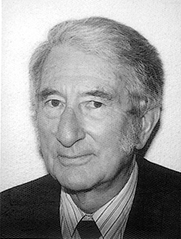4 Learning a language, learning through language and learning about language
By observing the child–parent interaction in the earlier video we were able to draw out some answers to questions concerning language and learning and the relationship between the two. More specifically, we saw how learning takes place through language use and in social interaction with others, and we also saw how language itself is learnt in social interaction with others. A key proponent of this view is Michael Halliday, who is regarded as one of the world’s leading linguists and is the leading exponent of systemic functional linguistics (SFL).
Halliday (2004) argues that there are three ways of thinking about the relationship between learning and language: learning a language, learning through language and learning about language. As children are socialised, they are engaged in all three processes simultaneously. They learn a language, i.e. how to form sounds and utterances in their first (or additional) language(s) (learning a language). They learn about the world as they do so, for instance, by acquiring the word ‘hail’ they come to learn that there is such a concept (possibly even before having experienced it in the real world) and that is different from both snow or rain (learning through language). And finally, they learn about language, i.e. through either explicit or implicit feedback and modelling, they learn how to put together phonemes, morphemes, words, and ultimately phrases together accurately.
Halliday built his theory on the example of young children learning in informal contexts, so, as a way of beginning to encourage your skills in critical thinking, you may want to think about how learning in other contexts differs from this. For instance, to what extent does Halliday’s argument about the three-pronged learning still apply in formal educational contexts or in contexts where adults learn? To what extent does the subject matter play a role? In the next section, we will introduce another important scholar in the area of language and learning, who shares points in common with Halliday, but also differs from his thinking in other ways.

